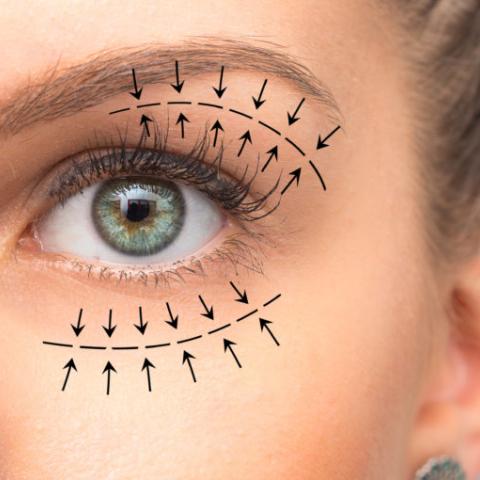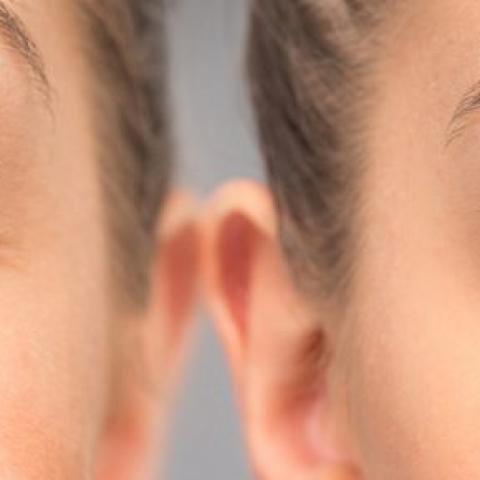Eyelid Surgery Procedure

What is blepharoplasty?
Loose skin above the eyes, tired eyes or bags under the eyes can be improved dramatically with eyelid surgery, also known as blepharoplasty. Eyelid surgery improves the appearance of your upper eyelids, lower eyelids or both.
Your surgeon will offer a total care approach to ensure a rejuvenated appearance to the surrounding area of the eyes – resulting in a more rested, alert look.
When considering Eyelid Surgery (blepharoplasty), always look for a board-certified cosmetic surgeon with specialized training and significant experience. For the best results, choose a cosmetic surgeon who is affiliated with a major medical center, make sure to ask your doctor about his or her credentials, training and how many procedures he or she has performed.
HOW TO PREPARE ?
Am I a candidate for eyelid surgery (blepharoplasty)?
- A common cosmetic procedure in patients age 30 and older, eyelid surgery, also known as an eyelid lift, is used primarily to fight the effects of aging skin. As skin ages, it gradually loses its elasticity, and this, combined with the constant pull from gravity, leads to excessive skin collecting in the upper eyelids, causing drooping of the eyelids. The primary cause of lower-lid aging is loosening of skin and the underlying muscle.
- The best candidates for eyelid surgery are adult men and women who have healthy facial tissue and muscles and realistic goals for improving the upper and/or lower eyelids and surrounding area. If improving both upper and lower eyelids, the procedure is called an upper and lower blepharoplasty.
- Candidates for eyelid surgery include:
- Healthy individuals who do not have a life-threatening illness
- Individuals with a positive outlook and specific goals in mind for blepharoplasty
- Individuals without serious eye conditions.
- You should tell your cosmetic surgeon if you have any of the following medical conditions:
- Eye disease, such as glaucoma, dry eye or a detached retina
- Thyroid disorders, such as Graves’ disease and under or overactive thyroid
- Cardiovascular disease, high blood pressure or other circulatory disorders
Diabetes.
How do I prepare for eyelid surgery (blepharoplasty)?
Preparation for your eyelid surgery includes:
- Lab testing or a medical evaluation
- Taking certain medications or adjusting your current medications
- Stopping smoking well in advance of surgery
- Avoiding taking aspirin, anti-inflammatory drugs and herbal supplements due to the risk of increased bleeding.
RESULTS
What results can I expect?
The final results of your eyelid surgery (eyelid lift) will appear within several weeks. While eyelid surgery will not stop your eyes from aging, the procedure is typically very long lasting. The effects of upper eyelid surgery can last many years to an entire lifetime, while lower eyelid surgery rarely needs to be repeated. View our eye lift before and after photos to see results from actual eyelid lift patients.
What is involved in recovery?
- Eyelid surgery is usually performed as an outpatient procedure. If this is the case, be certain to plan for someone to drive you home after surgery and stay with you at least the first night following surgery.
- Initial healing throughout the first one to two weeks following your eyelid surgery may include:
- Swelling
- Bruising
- Irritation or dry eyes
- Irritation at the incision sites.
- It is important that you practice careful sun protection, including using darkly tinted sunglasses until the healing process is fully complete.
WHAT TO EXPECT
How is eyelid surgery (blepharoplasty) performed?
Eyelid surgery can involve the upper eyelids, lower eyelids, or both eyelids depending upon the goals of the surgery and recommendations of your surgeon:
Upper eyelid surgery
involves the placement of incisions in the natural crease of the upper lid, making them well hidden when the eyes are open. The excess skin and protruding fat are removed and the incision is closed. An entire upper eyelid surgery can be completed in approximately 45 minutes to one hour. Your surgeon may combine upper eyelid surgery with an eyebrow lift to achieve optimal rejuvenation results if the eyebrows are too low.
Lower eyelid surgery
can correct conditions with an incision just below the lower lash line. Excess skin in the lower eyelid is removed through this incision. Your surgeon may also use an incision hidden inside the lower eyelid, or a transconjunctival incision, as an alternative technique to correct lower eyelid conditions and redistribute or remove excess fat.
If the transconjunctival approach is used, there is no visible incision. If the lower eyelids are lax, as they are in many middle-aged individuals, your surgeon may recommend tightening the lower lids in addition to removing skin and/or fat (canthopexy or canthoplasty).
Eyelid surgery usually takes about two hours to complete if both upper and lower eyelids are completed at the same time. Typically, a local anesthesia is combined with conscious sedation (also known as “twilight sleep”).
Is eyelid surgery (blepharoplasty) safe?
All surgical procedures carry some risk. Although rare, possible complications from eyelid surgery include:
- Bleeding
- Infection
- Dry eyes
- Abnormal discoloration of the skin of the eyelids
- An inability to fully close the eyes
- Eyelid skin that folds in or out abnormally
- A pulled down lower lid lash line
- Possible loss of vision (extremely rare).


